WARFARE BEYOND MERE NUMBERS
Prepare for an immersive combat experience where damage goes beyond mere numbers found in other games. Instead, precise real-world values and an authentic ballistics model determine each weapon‘s damage, autonomously calculating outcomes based on this data. It‘s all about mastering the art of the perfect shot and understanding its impact on the human body.
MASTER YOUR MARKSMANSHIP SKILLS
Understanding terminal ballistics is vital. Dive into a meticulously crafted system that strikes a balance between hardcore realism and accessible gameplay, offering a gradual learning curve that is easy to understand yet challenging to truly master. Each projectile‘s impact and effectiveness are determined by various factors, including energy, velocity, and penetration capabilities, and how these factors influence the damage potential of different types of ammunition.
Various types of ammunition are at your disposal, each with unique characteristics and real-life properties derived from the materials comprising their jacket and core. SP (Soft Point) rounds are engineered to expand upon impact, proving effective against unarmored adversaries. FMJ (Full Metal Jacket) ammunition excels in penetrating targets efficiently. AP (Armor-Piercing) rounds specialize in breaching. armored defenses. Finally, HP (Hollow Point) bullets are crafted to expand upon entry, inflicting greater damage and striking a balance between penetration and impact.
The projectile simulation includes a variety of detailed aspects: Firstly, it accounts for jacket damage and detachment. Secondly, it simulates core deformation, known as mushrooming, as well as disintegration. Thirdly, considering the bullet‘s rotation, it incorporates the ricochet and projectile destabilization physics. Finally, it includes a physical simulation within the human body, calculating both temporary and permanent cavities in soft tissues and their impact.
PENETRATIVE CAPABILITIES OF DIFFERENT AMMUNITION TYPES
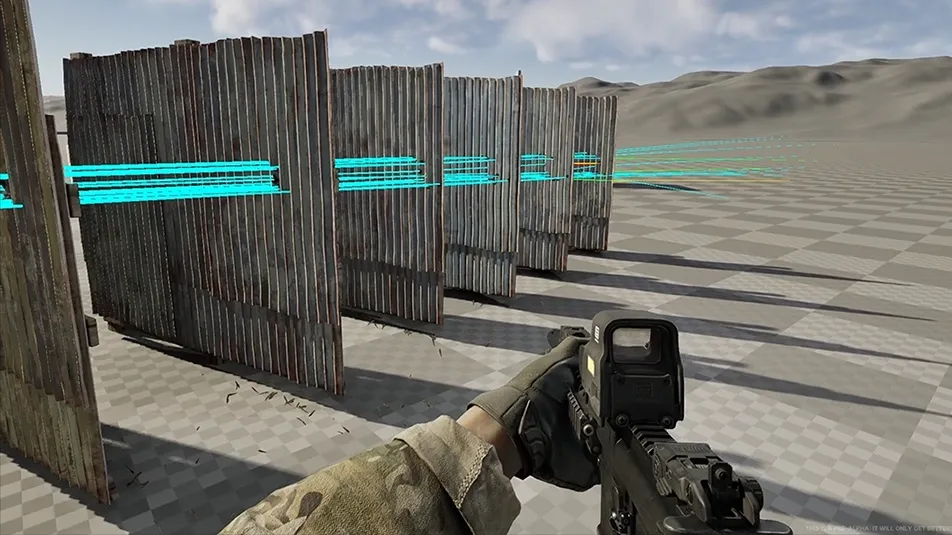
When comparing soft lead core ammunition (FMJ) to tungsten core ammunition (AP), you‘ll observe that while soft lead may struggle to penetrate a double-layered metal fence, tungsten core rounds effortlessly pierce through multiple barriers. The simulation considers factors like kinetic energy density, angle of obliquity, deformation, and the differences between full and partial penetration.
TEMPORARY CAVITIES
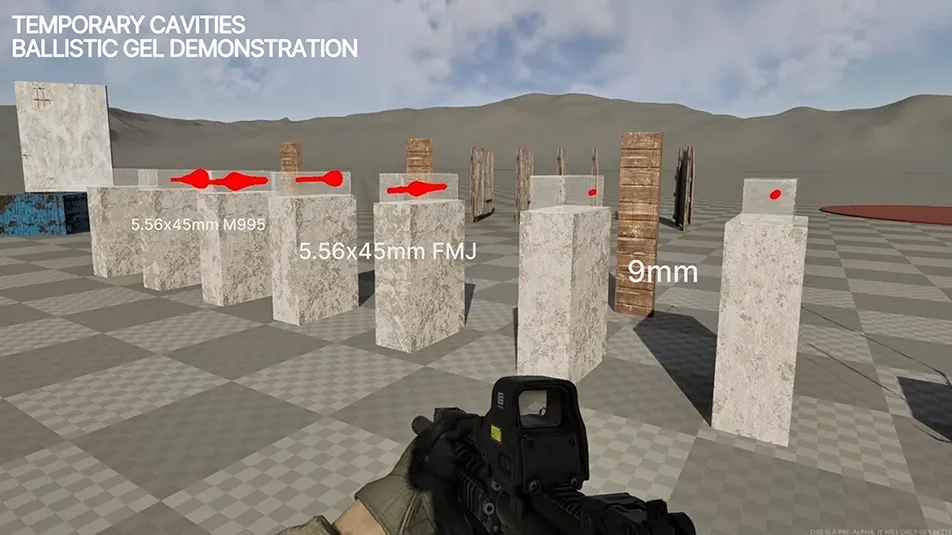
Beyond the projectile’s trajectory, it’s the impact that counts. Upon striking a target, a bullet‘s transferred energy fluctuates depending on its specifications and the composition of the obstacle. This involves accounting for factors such as the bullet‘s rotation, deformation, tumbling, and alterations in behavior after penetrating a barrier. For instance, firing through a wooden wall may diminish penetration while increasing blunt force trauma.
RICOCHET
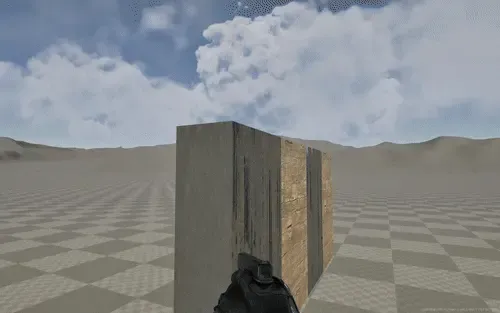
Ricochets demonstrate the sophistication of the physics model. Upon impact with a solid surface at an angle, the model accounts for both the characteristics of the projectile and those of the obstacle. For example, a soft material like wood results in a wider ricochet angle and lower velocity compared to a hard material like steel.
Moreover, the model can replicate the behavior of projectiles hitting water (as shown in the Terminal Ballistics Demonstration). This occurs when a particular impact angle is consistently maintained. If this angle is exceeded, the object doesn‘t bounce off the surface but instead enters the water.
CONTROL THE RECOIL
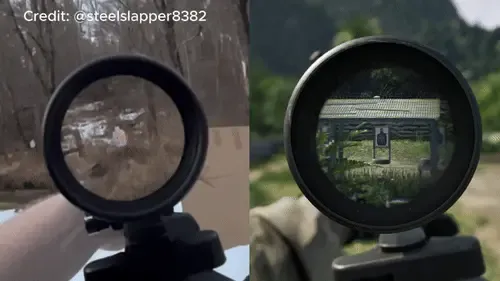
Mastering recoil control is complex and influenced by various factors including the muzzle velocity, the weight of your firearm and its ammunition. With each shot fired, your weapon‘s weight decreases, thus changing how the recoil feels. For instance, there can be up to a 10% difference in recoil control with an AR15, depending on whether you are shooting with a full magazine or the last bullet.

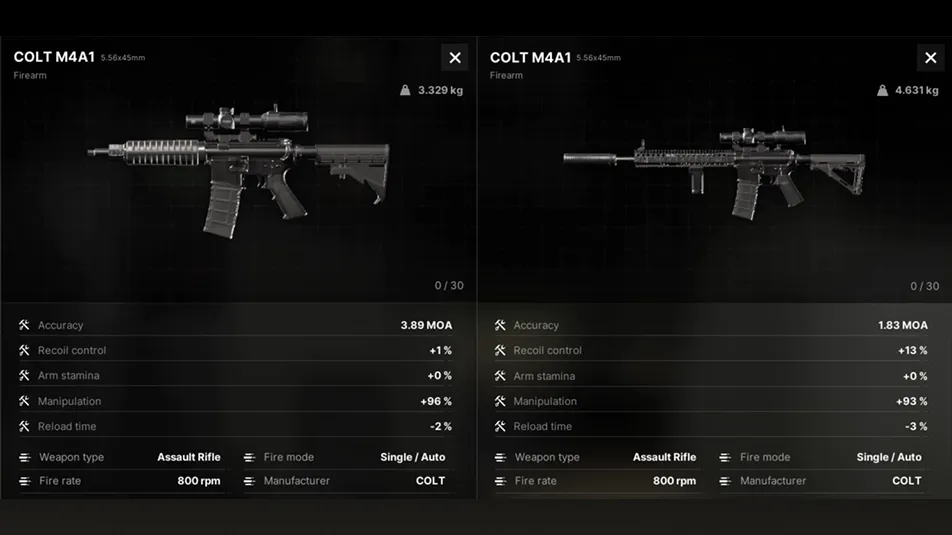
Additionally, the movement of the bolt mechanism within the firearm contributes to its realism. When firing, the bolt moves backward, intensifying the felt recoil and causing the firearm to move in your hands. However, as the bolt returns to its original position, it stabilizes the firearm to some extent. This doesn’t happen with simpler bolt-action rifles without this automatic functionality.
As a Special Forces Operative, your training helps you manage recoil during shooting, but this adjustment varies with each shot, making each experience unique. Additionally, your stamina level is crucial. If you‘ve been running or jumping, your stability will be compromised, and prolonged aiming can also cause your aim to waver. Keep an eye on your overall energy and arm strength to maintain peak performance and deadeye accuracy!
KNOW YOUR BODY
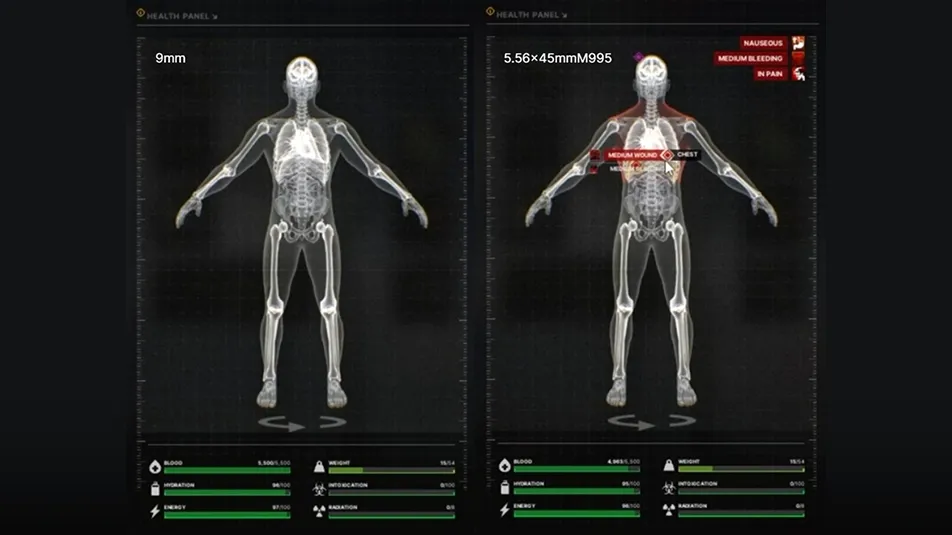
Having a thorough understanding of your body is essential. Your PMC operative has a detailed human anatomy with organs, bones, and structures, accurately portraying injury-based cavities caused by projectiles. Addressing injuries with gamified treatments offers logical consequences, extending beyond simple cause-and-effect when wounded.
The behavior of a bullet upon hitting armor varies dynamically, depending on the ammunition‘s properties, especially its penetration capability. This leads to diverse outcomes: a bullet might ricochet harmlessly off the armor, penetrate it to cause significant damage, or pierce through only to be stopped by the back plate. Each scenario is meticulously calculated, reflecting the complex realities of ballistics and armor interaction, ranging from severe internal trauma to more superficial wounds.
Severe injuries like bleeding and damage to your organs affect your character‘s body and mind, making it harder for you to perform well in combat. Various things can happen during action, and each situation requires careful handling. It is essential to know that even a minor injury can lead to more significant issues, such as limited movement, worsened aim, and impaired hearing, especially in a heated combat zone. Sometimes, you inadvertently make noise, potentially revealing your location to enemies. In more severe cases, these injuries can cause blood loss, which may affect your vision or even lead to a coma, from which only other friendly PMCs can save you. Understanding and managing these risks is critical to performing well in Gray Zone Warfare.
Thank you for being with us, and we can‘t wait to share further details soon!
MADFINGER Games Team.
CHECK OUT THESE FEATURED CREATORS TO LEARN MORE
Creators were granted an exclusive sneak peek of new content covering the ”GZW Combat Experience” in Devlog 3. Enjoy the unique perspectives shared by these 3 creators.
